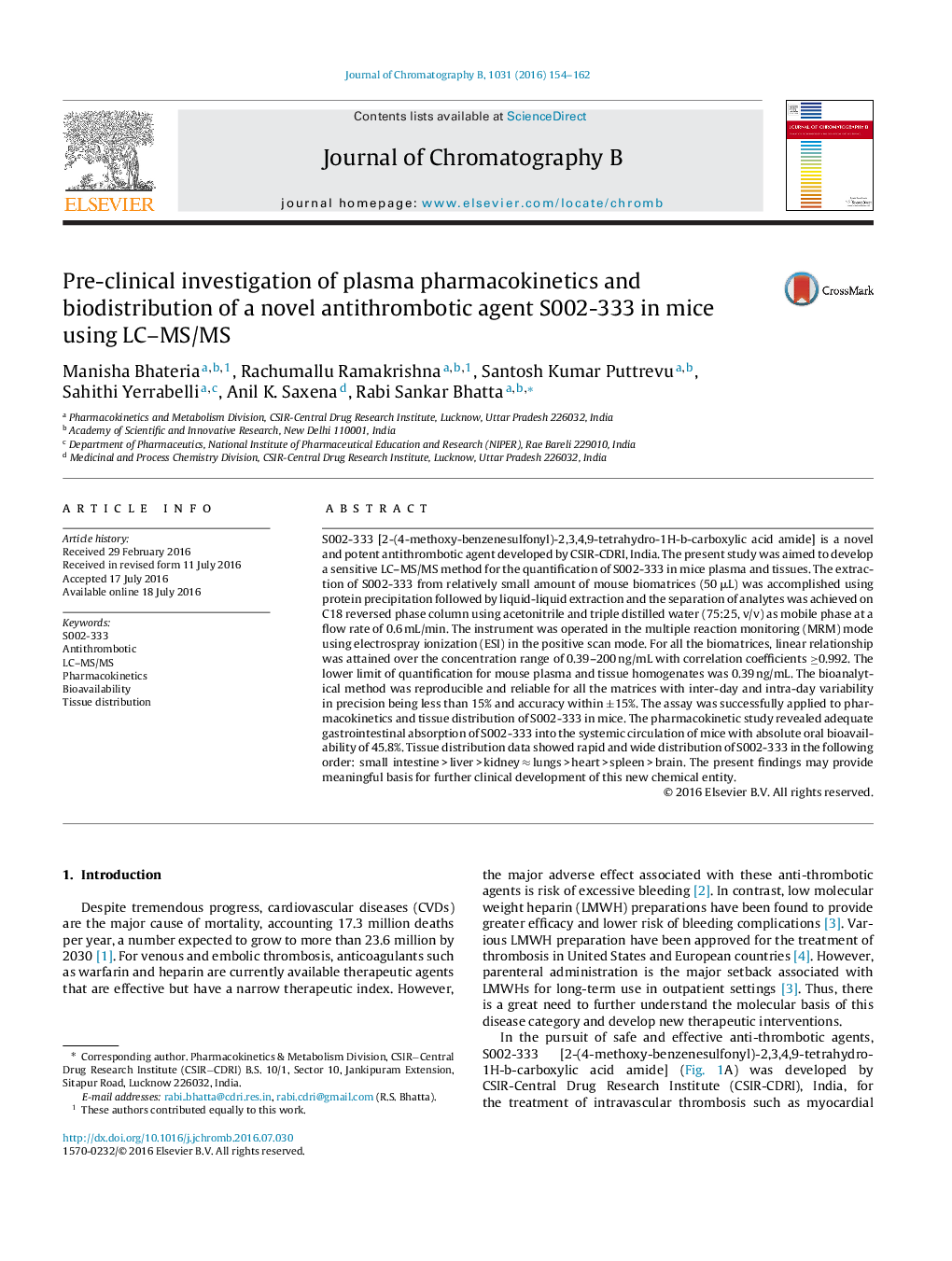| Article ID | Journal | Published Year | Pages | File Type |
|---|---|---|---|---|
| 1212601 | Journal of Chromatography B | 2016 | 9 Pages |
•LC–MS/MS method was developed for quantification of S002-333 in mice biomatrices.•Selective and sensitive method (0.39 ng/mL) and required low sample volume (50 μL).•Oral absolute bioavailability of S002-333 was 45.84%.•Order of drug distribution: small intestine > liver > kidney ≈ lungs > heart > spleen > brain.
S002-333 [2-(4-methoxy-benzenesulfonyl)-2,3,4,9-tetrahydro-1H-b-carboxylic acid amide] is a novel and potent antithrombotic agent developed by CSIR-CDRI, India. The present study was aimed to develop a sensitive LC–MS/MS method for the quantification of S002-333 in mice plasma and tissues. The extraction of S002-333 from relatively small amount of mouse biomatrices (50 μL) was accomplished using protein precipitation followed by liquid-liquid extraction and the separation of analytes was achieved on C18 reversed phase column using acetonitrile and triple distilled water (75:25, v/v) as mobile phase at a flow rate of 0.6 mL/min. The instrument was operated in the multiple reaction monitoring (MRM) mode using electrospray ionization (ESI) in the positive scan mode. For all the biomatrices, linear relationship was attained over the concentration range of 0.39–200 ng/mL with correlation coefficients ≥0.992. The lower limit of quantification for mouse plasma and tissue homogenates was 0.39 ng/mL. The bioanalytical method was reproducible and reliable for all the matrices with inter-day and intra-day variability in precision being less than 15% and accuracy within ±15%. The assay was successfully applied to pharmacokinetics and tissue distribution of S002-333 in mice. The pharmacokinetic study revealed adequate gastrointestinal absorption of S002-333 into the systemic circulation of mice with absolute oral bioavailability of 45.8%. Tissue distribution data showed rapid and wide distribution of S002-333 in the following order: small intestine > liver > kidney ≈ lungs > heart > spleen > brain. The present findings may provide meaningful basis for further clinical development of this new chemical entity.
